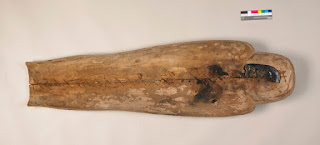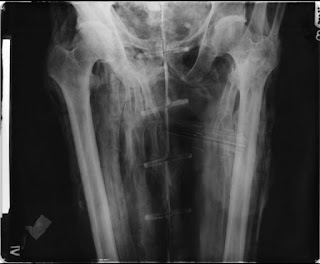miércoles, 31 de mayo de 2017
jueves, 11 de mayo de 2017
mummy
This extremely well preserved mummy is that of a man who lived during the Ptolemaic Period. According to the customs of the time, the body of the deceased was carefully wrapped in strips of linen; the design formed by these strips, notably around the face, was often extremely sophisticated. The mummy is covered with a cartonnage consisting of several elements: a mask covering the head, a wide collar over the chest, an apron across the legs, and finally, a casing over the feet.
Louvre Museum
Louvre Museum
miércoles, 10 de mayo de 2017
Human Remains; Mummy of Padiamun
Human Remains; Mummy of Padiamun
Mummified remains of a male adult named Padiamun, an official of the barque of Amun at Karnak who lived in the late 8th century BC. His name means 'he whom Amun gave' and he held the titles 'sailor of the barque of Amun' and 'chief of navigation of the barque of Amun'. Inscriptions on his coffins reveal his father was Thatienwensu and his mother was Taditanebhen. His brother was Nehemsumontu who was also a 'chief of navigation of the barque of Amun' and his coffins are now in museums at Boulogne-sur-Mer and Grenoble.
In September 1851 Padiamun’s mummy was unwrapped at Edgeworth Manor by a surgeon named H W Rumsey, Esq. The wrappings were roughly replaced after the examination in 1851 and then rewrapped in 1976. There are several bags of excess bandages. The mummy was X-rayed in 1967 and CT scanned in 2012 . PHK Gray who led the radiograph study of Liverpool's mummies in 1967 noted that the treatment of Padiamun's body is not normally found after the beginning of the Twenty-sixth Dynasty and suggested embalmment during the Twenty-first and Twenty-second Dynasties. A sample of resin was taken from the top of the cranium in 1999 for analysis which revealed the contents to be: 61% fat/oil, 0.2% coniferous resin, 1.5% balsam
...........
http://www.liverpoolmuseums.org.uk/wml/collections/antiquities/ancient-egypt/item-303546.aspx
Suscribirse a:
Entradas (Atom)
























